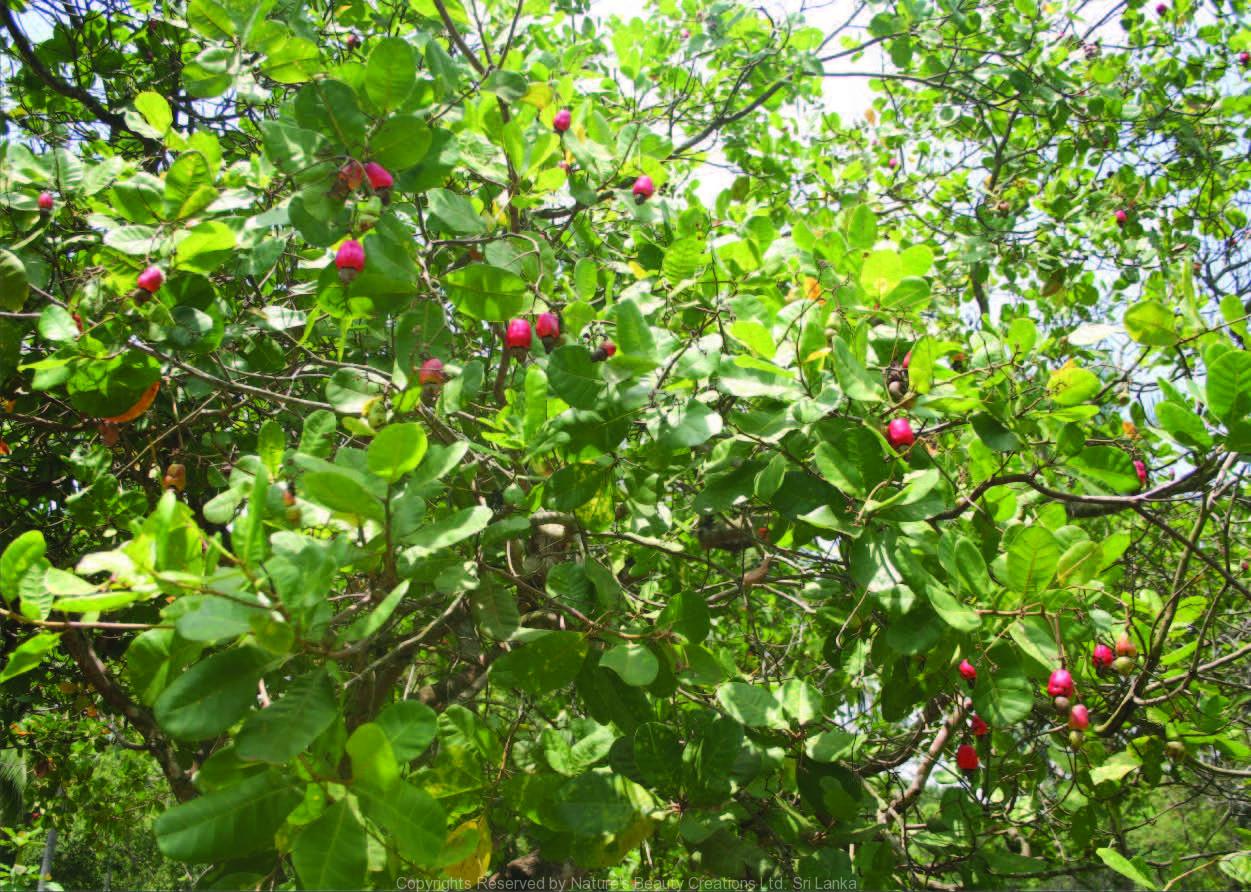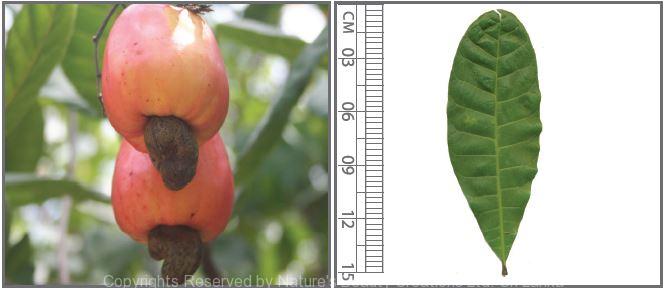

Traditional Knowledge
Useful plant parts :
Bark, receptacle, kernel and young shoot
Uses in traditional medicine :
- Decoction of the bark is used to treat diarrhoea, syphilitic swelling of joints and diabetes
- Ripe receptacles are good for scurvy, uterine complications and dropsy
- Oil of kernel is an antidote for irritant poisons
- Young shoots act as a remedy for cough
Scientific Research
Chemical constituents:
Phenolic compounds: anacardic acids, cardols and its derivatives from nut shell oil; terpenes:
(E)-β-ocimene, a-copaene, δ -cadinene and β-caryophyllene from leaf oil; methyl salicylate and benzyl tiglate from flower oil
Bioactivity :
Nut shell oil: antibacterial, tyrosinase inhibitory activity; apple juice: cytotoxic against cancer cells; ethanol extracts of cashew nut skin powder: free radical scavenger; leaf extract: analgaesic, anti-inflammatory
Clinical:
Note :
Ripe fruit receptacles and kernels are edible
References : Kamath, V. and Rajini, P. S., (2007), The efficacy of cashew nut (Anacardium occidentale L.) skin extract as a free radical scavenger, Food Chemistry, 103(2), 428-433. Kubo, I. et al., (1993), Antitumor agents from the cashew (Anacardium occidentale) apple juice, Journal of Agricultural and Food Chemistry, 41(6), 1012-1015. Kubo, I. et al., (1994), Tyrosinase Inhibitors from Anacardium occiden- tale Fruits, Journal of Natural Products, 57(4), 545-551. Maiaa, J, G, S. et al., (2000), Volatile Constituents of the Leaves, Fruits and Flowers of Cashew (Anacardium occidentale L.), Journal of Food Composition and Analysis, 13(3), 227-232. Onasanwo, S. A. et al., (2012), Analgesic and anti-inflammatory properties of the leaf extracts of Anacardium occidentalis in the laboratory rodents, Niger J Physiol Sci, 27(1), 65-71.
Copyrights Reserved By
Natures Beauty Creations



